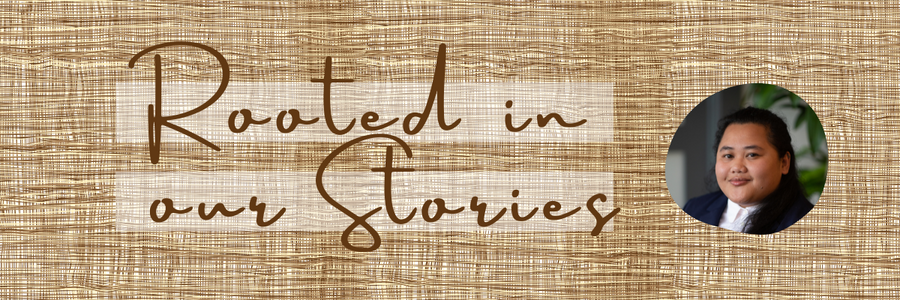Ab Juaner, Sage’s Equitable Development Program Manager, on putting down roots in the Graham Street Neighborhood.
Ab Juaner (she/her/they/them) was born in the Philippines but spent most of her adolescence in Los Angeles. There, she started her work as a labor organizer for immigrant care workers, a demographic that most often consisted of Filipino women. While working as an affordable housing policy advocate, Ab wanted to further deepen her understanding on housing and economic development and so moved to New York City to pursue a graduate degree in Urban Planning.
After graduating in 2019, they sought to move to Seattle where their family now resided. “I’ve always imagined that my urban planning practice will be rooted in deep community organizing, and I was looking for that kind of work in Seattle,” Ab says. Around the time when they learned of Puget Sound Sage’s work in South Seattle’s Graham Street neighborhood, Sage was also looking to hire someone to manage that program.
“The job almost felt meant to be – to be able work on the intersections of social issues that are important to me as a queer Pinay immigrant woman, while practicing urban planning, and being with community.”
Abdi Yussuf (left), Sage’s Equitable Development Organizer, and Ab (right) holding a Stop Speculating on our Homes banner outside the U.S. Department of Housing and Urban Development building in Washington, D.C.
She remembers those first few months on the job as being equally exciting as it is terrifying – not only being new on staff working with communities with deep roots to the neighborhood, but also being new to Seattle overall and settling herself in this new home. “I didn’t know a whole lot yet. I didn’t know the people. I didn’t know their stories. I didn’t know about the Cham community until I met Sarya, and she told me about her community. I also didn’t yet know how I would see myself, see my life, engaging within the Filipino community here in Seattle.”
Ab recalls the pivotal time when they felt truly bonded with the neighborhood.
Four months in Seattle and after years living without a car, she found herself driving a fifteen-passenger van full of Graham Street community leaders to Portland, Oregon to tour the nation’s first Community Investment Trust. “I’ve never driven anywhere south of King County, haven’t driven in a while being car-less for so long, actually. So I felt honored that everyone entrusted me with their lives,” she laughs. “But we shared so many stories on the road and I felt like during that day trip, our relationships with one another deepened in a lot of ways.”
 Puget Sound Sage staff with our coalitions, the Graham Street Community Action Team (CAT) and the Community Real Estate Stewardship Team (CREST), after touring Plaza 122 in Portland, OR.
Puget Sound Sage staff with our coalitions, the Graham Street Community Action Team (CAT) and the Community Real Estate Stewardship Team (CREST), after touring Plaza 122 in Portland, OR.
The group toured around Plaza 122 – a 29,000 square-foot commercial retail mall in Southeast Portland with about 30 businesses, where tenants can follow a long-term path to collective ownership of the building by investing $10-$100 per month.
Seeing a real-life example of a community-owned model inspired the group. “A few years later, Seattle is now exploring a Community Investment Trust model. The fact that we got to see it in Portland and be part of that story for Seattle’s future model is pretty incredible.”
Six months into living in Seattle, the pandemic hit.
It was then that Ab got to witness the true power of community resilience, and the strength of the relationships the Graham Street Community Action Team (CAT) built with one another over the past four years.
“There was just so much hopelessness and despair and feelings of insecurity when the pandemic started, and seeing the CAT members become a resource to one another, whether that’s through sharing meal program locations or sharing personal protective equipment. Seeing the connectedness that was developed through the Graham Street work, and having them show up for each other.
We already know that these organizations are frontline workers, that they are the first responders in their communities when danger or crisis happens, so to see them center community, show up as community leaders, be stewards of community resources to just help the neighborhood navigate through such a difficult time, I think that it speaks a lot to that vision of planning around people, around communities, and knowing that they know what they need to survive, to thrive, and to have full lives. I think the Graham Street program is an example of what true community resilience looks like.”
After living in the middle of a crisis and deepening relationships with their new community, Ab now calls South Seattle their home. Living so close to Graham Street, they love sharing the story of their work to loved ones, especially friend groups who are also urban planning nerds.
“I tell them that I’m working with this multi-faith, multi-ethnic, multi-cultural group of community leaders who are trying to ensure that their communities are not driven out and that they are the ones leading the development of a train station in their neighborhood. To be able to highlight a real-life example of how we can practice planning more thoughtfully, democratizing the process, and really empowering community to lead, that’s always fun for me to share to everyone I know.”
Ab is inspired by the Do-It-Yourself Public Realm Activation they’ve seen in their old neighborhood of Bushwick, Brooklyn, i.e. street murals and old tires converted into public planters. Ab hopes to encourage the practice of reimagining public spaces to create more shared spaces with communities.
They say it’s been nice to feel hopeful again lately, after what transpired in the last two years.
“I feel like I’m exiting this brain fog I’ve had since the pandemic started. I’m able to trust my skills, my knowledge, my experiences, and pair these with the gifts and talents of our community collaborators,” Ab says excitedly. She and the CAT members are currently working on the next chapter of Graham Street, an action plan that will make the vision the community had imagined for the neighborhood back in 2018 a reality.
“As a queer immigrant woman in America, imagining an equitable society, creating an inclusive built environment, and feeling emboldened to challenge and change systems of oppression for a feminist future, I just feel fortunate to be doing it here.”




